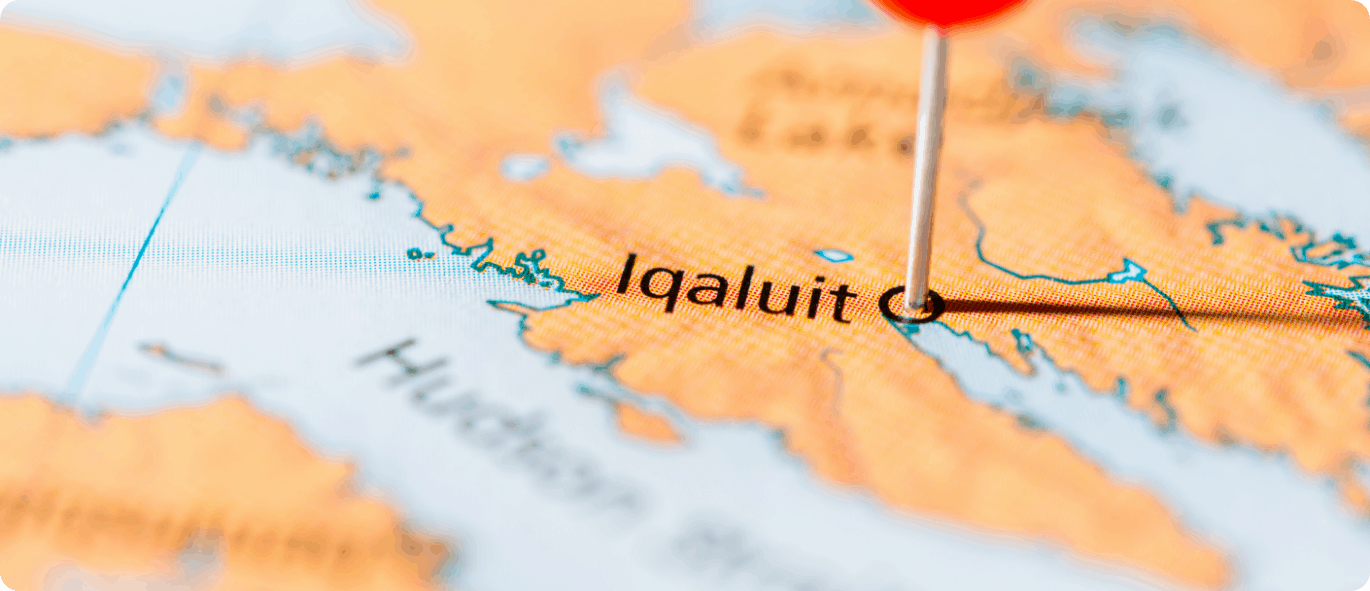Nunavut Immigration
Nunavut is Canada’s largest and newest territory, which was carved out of Northwest Territories in 1999.
It is also the northernmost Canadian territory, reaching far into the Arctic Circle and bordering northern Greenland.
Nunavut is located east of Northwest Territories; north of Manitoba, Ontario, Quebec and Hudson Bay; and west of Greenland.
There are only about 39,536 people living in all of Nunavut, 85% of whom are Inuit.
Other towns in Nunavut include Rankin Inlet (2,441 residents), Arviat (population 2,318), Baker Lake (1,872 residents), Cambridge Bay (population 1,619), Pond Inlet (1,549 residents), Igloolik (1,454 residents), Kugluktuk (population 1,450), Pangnirtung (1,425 residents), and Kinngait (population 1,441).
Approximately 63.1% of the people living in Nunavut have Inuktitut as their primary language, followed by 31.5% who speak English, 1.7% who known French and 1.4% who speak the Inuinnaqtun language.
Despite its small population, Nunavut has had for several years a population growth rate that is higher than Canada’s average and which was the highest in Canada from 2011 to 2016.
The top business sectors of Nunavut’s economy include the territorial government, the Canadian military, oil & gas, mining and mineral exploration, whaling, fishing, tourism, hunting, arts and crafts, construction, transportation, education and research.
Some of the points of interest in Nunavut include: Unikkaarvik Visitor Centre and Nunatta Sunakkutaangit Museum in Iqaluit; Auyuittuq National Park; Quttinirpaaq National Park; the glaciers of Baffin Island; Canadian High Arctic Research Station in Cambridge Bay; and the Kugluktuk Visitor Heritage Centre in Kugluktuk.

Iqaluit – The Territorial Capital
The territorial capital and largest city in Nunavut is Iqaluit, which is located on south-central Baffin Island and has a population of only 7,740 residents, 56.3% of whom are Inuit, 34.3% are White; 3% who are Black; and 2.0% are Filipino, among other ethnicities.
Iqaluit is closer in proximity to the town of Nuuk in southern Greenland than it is to St. John’s, Newfoundland and Labrador.
With its location so far north, average temperatures in Iqaluit are below freezing eight months out of the year; it is very cold during the long winter and cool during the short summer.
Around 75.7% of Iqaluit’s residents 25 years of age or older have a high school education, while 59.8% have a post-secondary education.
Immigrate to Canada for a Beautiful Future!
DISCLAIMER: This guide is not and shall not be considered as professional or expert advice.
